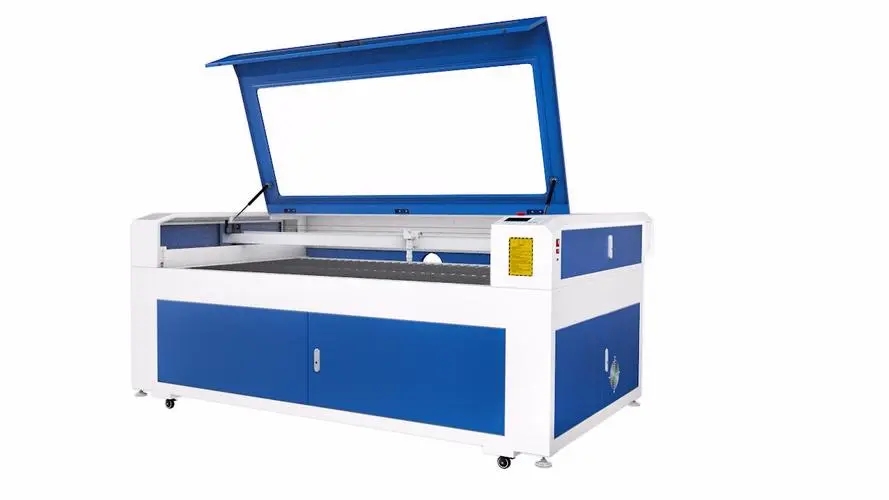What are the different uses of YAG and CO2 lasers?
Due to the different wavelengths of the laser beams, YAG lasers and CO2 lasers respond very differently to different materials. YAG laser (1064 micron wavelength is exactly ten times the wavelength of 1064 micron CO2 makes it very suitable for absorption by most metals, but this small wavelength inhibits its absorption by many other materials (wood, acrylic, plastic, fabric, etc.) ability.
CO2 laser beams are not easily absorbed by metals, but are easily absorbed by many organic materials (such as wood, acrylic, rubber, etc.), but are easily reflected from most metal surfaces. The different wavelengths of the two beams are mainly because they respond to different types of materials. There are many other differences between these two types of lasers. Properties such as thermal efficiency, heat transfer, minimum and maximum power output affect the material as opposed to the beam.
Can a CO2 laser work on any type of metal?
Yes, carbon dioxide acts on certain metals in a few different ways. Coated metals include coated brass, anodized aluminum or any other layer CO2 laser beam engraved metal material. Even at low power. CO2 lasers are also effective at removing paint from most metal surfaces. Painted brass is a popular engraving material because of the high contrast of all the different colors that can be used in the engraving process. However, some metal surfaces are coated with very hard paint coatings, making it difficult to engrave clearly even with a 120 watt laser. Common products here are ballpoint pens and anything powder coated.
Another very popular metal in CO2 is anodized aluminum. CO2 When the laser beam hits the anodic oxide coating it turns white and provides good contrast across many different anodic oxide colors. Aluminum protected with a gold coating may not be anodized (it can be protected by the chromating process), and engraving will not work well.
Suitable for a variety of projects on these materials due to their high contrast, fast engraving speed and low power requirements, CO2 laser systems are compatible with painted metal and anodized aluminum.
stainless steel metal marker
Until recently, marking stainless steel with a low-power CO2 laser was extremely difficult. Most questions are questions. The CO2 energy reflects off metal surfaces and absorbs only a small amount, producing very weak or non-existent traces. Over the last few years a number of different companies have introduced products that allow low power corporate CO2 lasers to create very black permanent markings on stainless steel. These products are known as Laser Marking Materials (LMM), commonly known as Cermark or Thermark. LMM is sprayed on uncoated stainless steel (just like spraying). You should set the LMM aside to dry for a few minutes before you are ready to sculpt.
Laser engraving Cermark, as it appears, permanently bonds the material to the metal, creating a permanent black mark. After engraving, rinse the metal with water to remove excess spray. This simple process is commonly used to label tools, medical devices and industrial components with barcodes and serial numbers. LMM can also be used with other metals, but we recommend that you test any other material you are considering to ensure the logo is acceptable. In our experience, stainless steel LMMs are the most predictable metals to use with.
YAG Laser Can you work on any type of non-metallic material?
Unlike CO2 lasers, YAG lasers are only compatible with a limited number of materials. Due to its small wavelength, YAG lasers can mark many different types of metals and plastics, but with little to the effectiveness of standard CO2 products (wood, rubber, acrylic, etc.). Usually, you’ll only find it in industrial applications. YAG laser and personalized applications are mainly limited to mass marking of products such as ballpoint pens.
The reason so many people are excited about LMM is that there are many stainless steel products that need laser marking, and laser marking is used. YAG laser marking is expensive.
Advantages of YAG Laser:
metal engraving
Faster than CO2 laser system (set up as vibrator system)
Disadvantages of YAG laser:
Artwork can take a long time to set up, especially when engraving graphics.
Organic materials (wood, acrylic, etc.) do not work well
Expensive to buy and expensive to maintain
Benefits of carbon dioxide laser:
Suitable for wood, acrylic, plastic and other materials
Available with stainless steel markers (LMM) and most coated metals
Quickly set up each new composition
Disadvantages of carbon dioxide laser:
Not as fast as YAG (but still engraving at 120 inches per second)
Metals are not engraved but will leave marks on some metals





